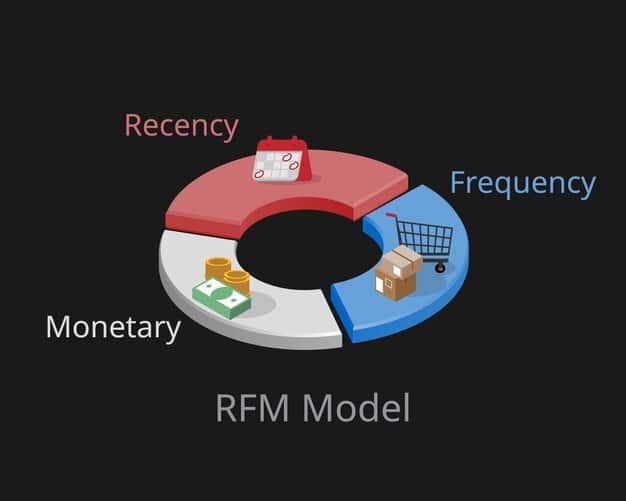Are Subscription-Canceling Apps Really Saving Americans Money? A Data-Driven Review

Subscription-canceling apps promise to save users money by identifying and canceling unwanted subscriptions, but their effectiveness varies depending on individual spending habits and the app’s features, requiring careful review and active management to ensure actual savings.
Are you tired of those sneaky subscription fees draining your bank account? Plenty of apps promise to help, but **are these 5 subscription-canceling apps actually saving Americans money? A data-driven review** is crucial to understand if they truly deliver.
The Allure of Subscription-Canceling Apps
In today’s digital age, subscriptions are everywhere. From streaming services to meal kits, it’s easy to lose track of where your money is going. Subscription-canceling apps have emerged as a popular solution, promising to identify and cancel unwanted subscriptions, ultimately saving you money. But do they live up to the hype?
These apps work by linking to your bank accounts and credit cards to monitor recurring charges. They then present you with a list of your subscriptions, allowing you to cancel the ones you no longer want or need. Some apps also offer negotiation services, attempting to lower your subscription costs.
How Subscription-Canceling Apps Work
Subscription-canceling apps generally operate by scanning your financial transactions to pinpoint recurring subscription charges. They then present these subscriptions in an organized manner, allowing you to review and decide which ones to cancel. The process is designed to be simple and user-friendly.
Potential Benefits of Using These Apps
The primary benefit is, of course, potential cost savings. By identifying and canceling unwanted subscriptions, you can free up money in your budget. These apps also provide a convenient way to manage your subscriptions in one place, saving you time and effort, and can reduce the risk of being charged for subscriptions you forgot about.

Ultimately, the effectiveness of subscription-canceling apps depends on your spending habits and how actively you use the app. They are a tool, not a magic bullet, and require your participation to maximize their benefits.
A Deep Dive into 5 Popular Subscription-Canceling Apps
With numerous subscription-canceling apps available, it’s important to understand their differences and features. We’ll take a closer look at five popular options, evaluating their pros, cons, and overall effectiveness.
These apps vary in terms of features, pricing, and user interface. Some offer free basic services, while others charge a monthly or annual fee for premium features. The best app for you will depend on your specific needs and preferences.
- Truebill (now Rocket Money): Offers subscription tracking, bill negotiation, and budgeting tools.
- Trim: Provides subscription cancellation, debt negotiation, and automated savings.
- Clarity Money (now Marcus Insights): Offers spending analysis, subscription management, and goal setting.
- Hiatus: Focuses on subscription management and price negotiation.
- Bobby: A simple and visually appealing subscription tracker.
Each of these apps has its own strengths and weaknesses. Some are better at identifying subscriptions, while others excel at bill negotiation. Consider your primary needs when choosing an app.
Data Speaks: Are Americans Really Saving Money?
While subscription-canceling apps promise significant savings, it’s crucial to examine the data to determine their actual impact. Studies and user surveys can provide valuable insights into the effectiveness of these apps.
Many users report saving money by using these apps, but the amount varies widely. Some users save hundreds of dollars per year, while others see only modest savings. The key factor is often the number of unwanted subscriptions identified and canceled.
Analyzing User Savings Data
Data from app developers and independent research firms suggests that the average user saves between $50 and $200 per year. However, these figures can be misleading, as they don’t account for users who don’t actively use the app or who don’t have many subscriptions to begin with.
The Importance of Active Management
Subscription-canceling apps are most effective when used actively. This means regularly reviewing your subscriptions, canceling unwanted services promptly, and negotiating lower rates when possible. Passive use is unlikely to yield significant savings.

The data suggests that these apps can be a valuable tool for saving money, but they are not a substitute for careful budgeting and spending habits. Active management is essential to maximize their benefits.
Potential Pitfalls and Considerations
While subscription-canceling apps offer numerous benefits, it’s important to be aware of potential pitfalls and considerations. These include privacy concerns, accuracy issues, and the risk of unintended cancellations.
Linking your bank accounts and credit cards to a third-party app raises privacy concerns. It’s essential to choose an app with strong security measures and a transparent privacy policy. Be sure to read the fine print before granting access to your financial information.
Privacy and Security Concerns
Data breaches and unauthorized access are always a risk when using financial apps. Look for apps that use encryption and two-factor authentication to protect your data. Also, be wary of apps that share your data with third parties for marketing purposes.
Accuracy and Unintended Cancellations
Subscription-canceling apps are not always accurate in identifying subscriptions. They may misclassify certain charges or fail to recognize recurring payments altogether. This can lead to unintended cancellations of services you actually want to keep.
- Regularly review the app’s list of subscriptions to ensure accuracy.
- Be cautious when canceling subscriptions, especially if you’re unsure about the service.
- Consider using a separate credit card for subscriptions to better track your spending.
By being aware of these potential pitfalls, you can mitigate the risks and use subscription-canceling apps more effectively.
Maximizing Savings with Subscription-Canceling Apps
To get the most out of subscription-canceling apps, it’s important to adopt a proactive approach. This involves setting clear goals, monitoring your progress, and adjusting your strategy as needed.
Start by setting a specific savings goal. How much money do you want to save each month or year? Having a clear target will help you stay motivated and focused. Also, begin by identifying all current subscriptions, categorizing them to decide what subscriptions are important and which can be dropped.
Setting Savings Goals and Tracking Progress
Use the app’s budgeting and tracking tools to monitor your spending and savings. Regularly review your progress and make adjustments to your budget as needed. Consider setting up alerts to remind you when subscriptions are due for renewal.
Negotiating Lower Rates and Finding Alternatives
Many subscription-canceling apps offer negotiation services, attempting to lower your subscription rates. Take advantage of these services to potentially save even more money. Also, explore alternative services to see if you can find better deals.
By following these tips, you can maximize your savings and achieve your financial goals with subscription-canceling apps.
The Future of Subscription Management
The subscription economy is here to stay, and subscription-canceling apps are likely to become even more sophisticated and integrated into our financial lives. Expect to see more personalized recommendations and automated features in the future.
As technology evolves, subscription-canceling apps will likely become more accurate and efficient at identifying and managing subscriptions. They may also integrate with other financial tools, such as budgeting apps and investment platforms.
AI-Powered Subscription Management
Artificial intelligence (AI) could play a significant role in the future of subscription management. AI-powered apps could learn your spending habits and automatically cancel unwanted subscriptions or negotiate better rates on your behalf.
Integration with Other Financial Tools
Subscription-canceling apps may also become more integrated with other financial tools, such as budgeting apps and investment platforms. This would provide a more holistic view of your finances and help you make better informed decisions.
The future of subscription management is promising, with the potential for even greater savings and convenience. Keep an eye on emerging technologies and trends to stay ahead of the curve.
| Key Aspect | Brief Description |
|---|---|
| 💰 Identifying Subscriptions | Apps scan transactions to find recurring subscription charges. |
| ✅ Canceling Unwanted Services | Users can cancel subscriptions directly through the app. |
| 💸 Negotiating Lower Rates | Some apps offer to negotiate subscription prices for lower rates. |
| 🛡️ Privacy Concerns | Users should choose apps with strong security and transparent privacy policies. |
Frequently Asked Questions
▼
Subscription-canceling apps are tools designed to help users identify, manage, and cancel unwanted recurring subscriptions by linking to bank accounts and credit cards to monitor charges.
▼
These apps work by linking to your bank accounts and credit cards, scanning transactions for recurring subscription charges, and presenting them in an organized manner for review and cancellation.
▼
The safety depends on the app’s security measures. Choose apps with strong encryption, two-factor authentication, and transparent privacy policies to protect your financial data.
▼
Yes, they can save money by identifying and canceling unwanted subscriptions. The amount saved varies based on individual spending habits and how actively the app is used.
▼
Popular choices include Rocket Money (formerly Truebill), Trim, Marcus Insights (formerly Clarity Money), Hiatus, and Bobby, each offering unique features for subscription management and savings.
Conclusion
Subscription-canceling apps can be a valuable tool for managing your finances and saving money, but their effectiveness depends on your individual spending habits and how actively you use the app. By understanding the potential benefits and pitfalls, you can make an informed decision about whether these apps are right for you.





